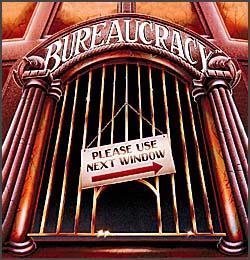Corporate governance : What's in the box?
A while back I had to analyze a large blue chip company and determine whether it would be a good or bad investment. The company had all its fundamentals in the green, perfect financial information, the strategy looked sound and the market promising. Logically it was a "buy and invest"...
So you think the company you are looking at is in good shape? The return is good, the market is healthy? You are ready to invest long term. You could be very far from the truth...The figures are good but look for more...
While reading carefully a financial report is important, a lot of softer but nonetheless very valuable information lies in the Corporate governance structure of the company... and the good news is that this information is comparatively easy to understand.
Many tend to see Corporate governance as an assembly of sissy - feel good - foggy - whatever it is - anyway it is not the hard facts - obscure meaningless bureaucratic controls.
One couldn't be farther from the truth...
Corporate governance's main objective is to protect the interests of the numerous stakeholders of the company and foremost the people who own it. While the new Sarbanes-Oxley (SOX) compliance regulations define rules for better transparency, Corporate Governance describes the company's controls, rules and policies that enforce ethical conduct, respect, good practices and integrity of the way the company is directed.
Is it all about "endless love in a beautiful world of durable development and environment friendly companies"?
While we have been accustomed to numerous spin doctor practices camouflaging what really matters to make an informed decision, checking the publicly available information will yield much insight into a company. Whether the financial report looks good or not, whether the website is slick, whether the analysts tell you "it is a solid company".
For Corporate Governance, you should look at the following criteria- Existence of an ethic code of good practices?
- Independence of the executive members of the board
- Division of Management and Control functions
- Specialized committees on the board
- Non-discriminating voting procedures
- Use of International accounting standards
- Absence of anti-takeover measures
- Information on executive salaries
What does it mean?
Are these points just obscure control measures? Are they "nice to have" features? Not by a long shot! All the Corporate Governance points should be investigated with as much care as the financials. They will tell you:
- Whether management is accountable to their shareholders for their decisions
- Whether management can be changed if not performing
- Whether the shareholder's value is maximized (and a takeover will maximize the value)
- Whether politics, cover-ups, and nepotism govern the company
- Whether the company is optimized for future growth
In practice, what gives Corporate Governance?...
Going back to the blue chip company I mentioned above, with all the "right" indicators in the green, I looked where it stood on Corporate Governance. Here is a summary of the analysis:
- Existence of an ethic code of good practices? Average
- Independence of the executive members of the board Average
- Division of Management and Control functions Terrible
- Specialized committees on the board Average
- Non-discriminating voting procedures Terrible
- Use of International accounting standards Terrible
- Absence of anti-takeover measures Terrible
- Information on executive salaries Excellent
The conclusions were:
- Too much reliance on one man and first circle
- Inadapted strategies to changing situation
- No counter power (risk of morale corruption)
- Group think
- Lower motivation of mid-managers
- Higher “unproductive” politics : no emulation
- Crown Prince might be inadapted
- Succession war? No inner regulation process
- Company not optimized
- Company bears seeds of long term organizational problems
- Risky investment for shareholder in the next 5-10 years
- Risk for employees in face of unsolved latent tensions
- Risk to competitiveness: less initiative, less creativity
No need to say that long term investments were not on the agenda anymore...
Gilles Daquin at http://gillesdaquin.blogspot.com



1 Comments:
Here, Corporate Governance Resources you can find 600+ resources about boards and corporate governance
Post a Comment
<< Home